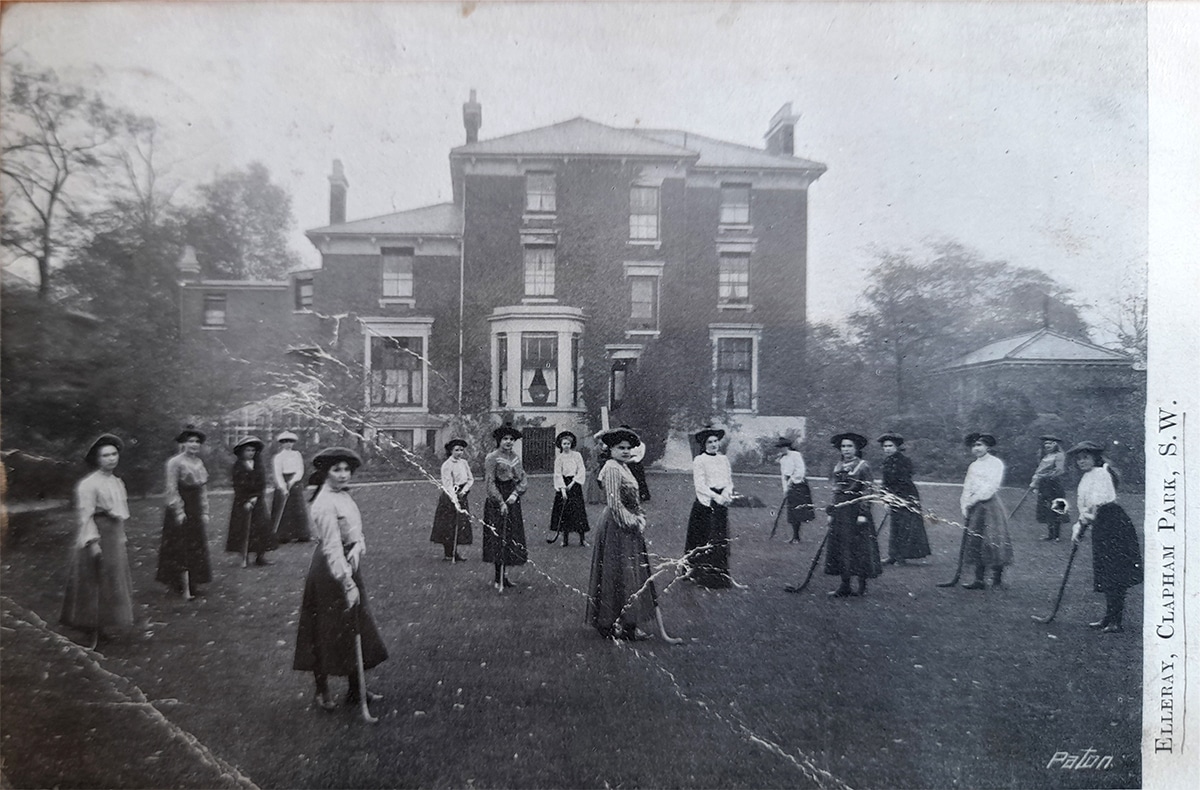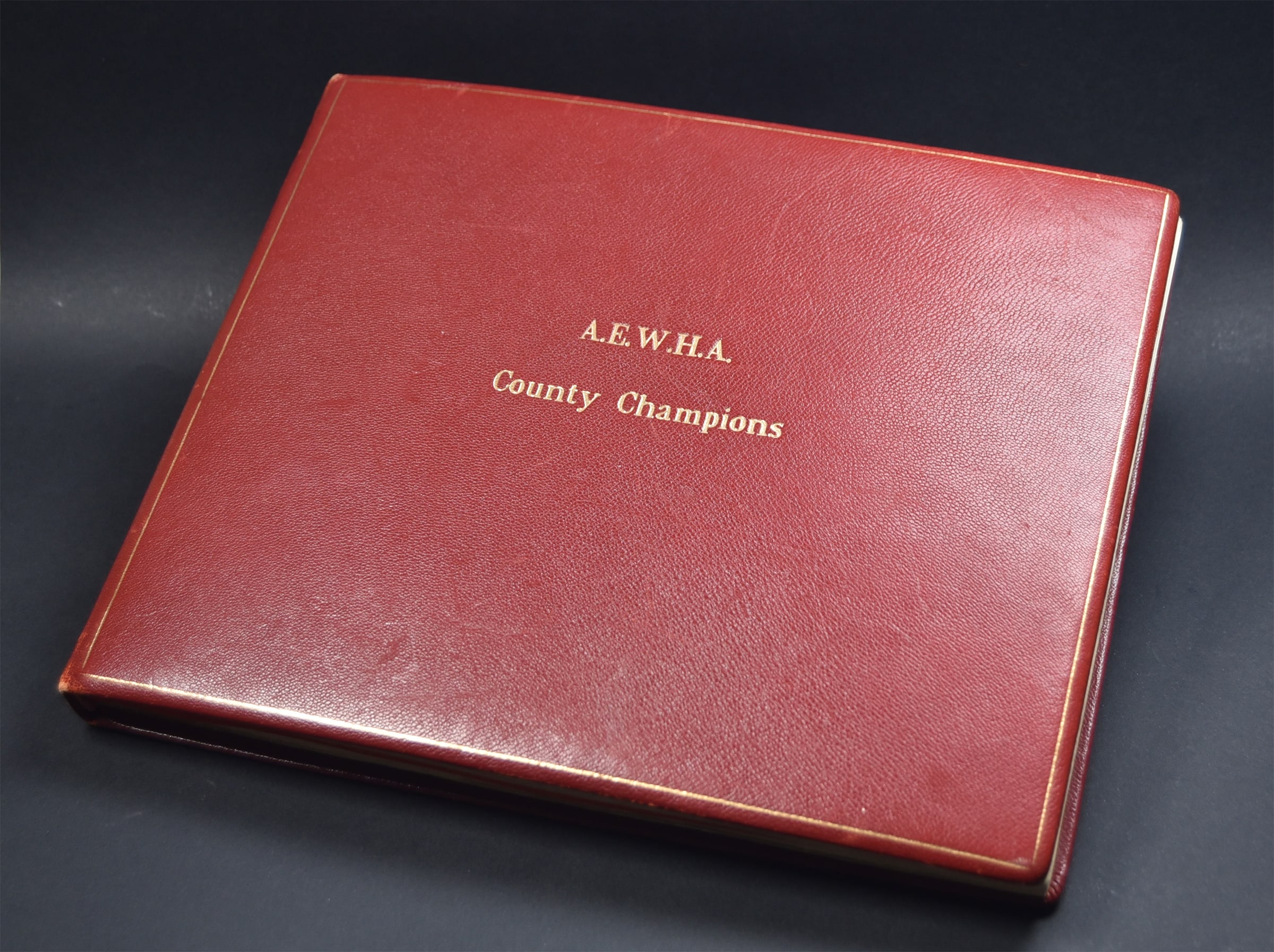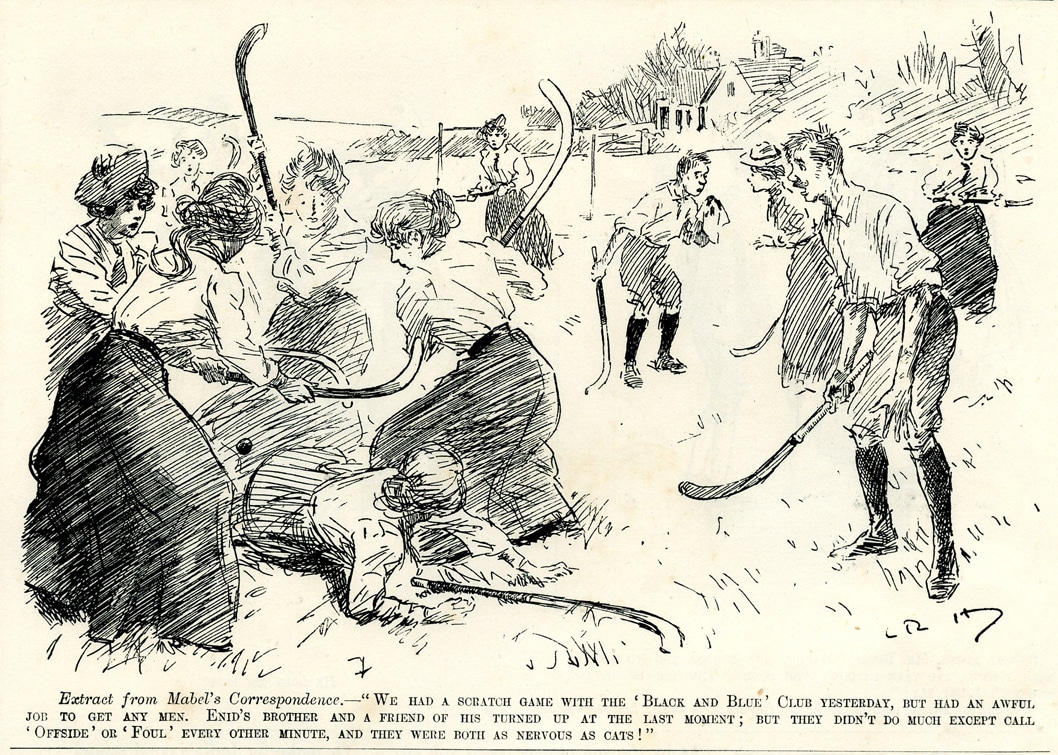 |
|
Cartoon from the Punch Almanack, 1903. The caption reads: |
Hockey rarely gets a mention on mainstream television outside of an Olympic year, and virtually never in the context of a drama series.
But the sport popped up in a most unexpected place on 9 May, when it was referenced in the BBC’s new Sunday night costume drama, The Pursuit of Love.
In the adaptation of Nancy Mitford’s bestselling novel about an upper-class English family between the first and second World Wars, domineering patriarch Lord Alconleigh informs his bookish niece Fanny that he does not believe in education for women, claiming it makes them lose their social graces and develop “thighs like gateposts” from playing hockey!
Granted, it’s not the most flattering of references – but it does throw a light on the prejudices that women of the time had to overcome to take part in their sport. In real life, similar sentiments had been voiced by critics of female athleticism – both men and women – from the moment women first picked up a stick.
Sections of Victorian and Edwardian society regularly warned about the dire consequences that playing hockey would have on women’s femininity and chances of motherhood, and newspapers of the day began referencing a creature known as ‘The Hockey Girl’.
This creature was invariably a “muscular, hard-faced, tan-complexioned Amazon”, of “strapping proportions” and “a sturdy vigorous air”. She had, the critics said, a “hockey voice” (loud), “hockey elbows” (sharp) and a “hockey stride” (determined).
She was even charged with killing romance by one regional newspaper, which declared that to see female hockey players returning from a match was “to receive an object lesson in how not to walk and move. The ugly swing of the hips, the masculine stride, the waving arms… the voice… piercing and strident… it is difficult to believe that these beings belong to the feminine sex”.
A dance and calisthenics (gymnastic exercises) teacher, perhaps sensing her opportunity to drum up some trade, wrote to the London Evening Standard in 1905: “I shudder to think of the next decade. The hockey girl of today will then have become a nondescript woman, awkward in gait, clumsy in manner, muscular, masculine, and generally objectionable. It will take twenty years of devotion to the minuet [a two-person dance of French origin] to… bring back to English social and domestic life the graceful girlhood of the past.”
Luckily, there were at least as many supporters of women playing hockey as there were detractors. One father – writing in 1899, but infinitely more enlightened than Mitford’s Lord Alconleigh – said: “When my daughters come home on their bicycles from a match or practice looking rosy and bright, their mother and I are rather pleased than otherwise… We certainly prefer this to the ‘pallor and anaemia’ which… was so much admired by the decadents of a few years ago.”
A mother whose daughters were also “smitten with the hockey craze” agreed: “I am truly rejoiced to think that the girls of the present day are being educated in a more sensible manner, both physically and mentally, than formerly, and will, therefore, be better fitted to make their way in the world.”
Fortunately, this line of reasoning won out – leaving future generations of girls and women to enjoy The Pursuit of Hockey!
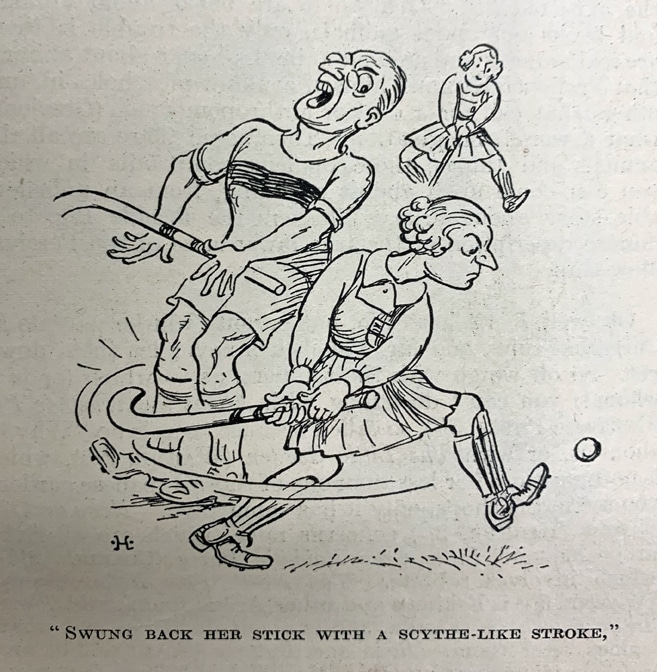 |
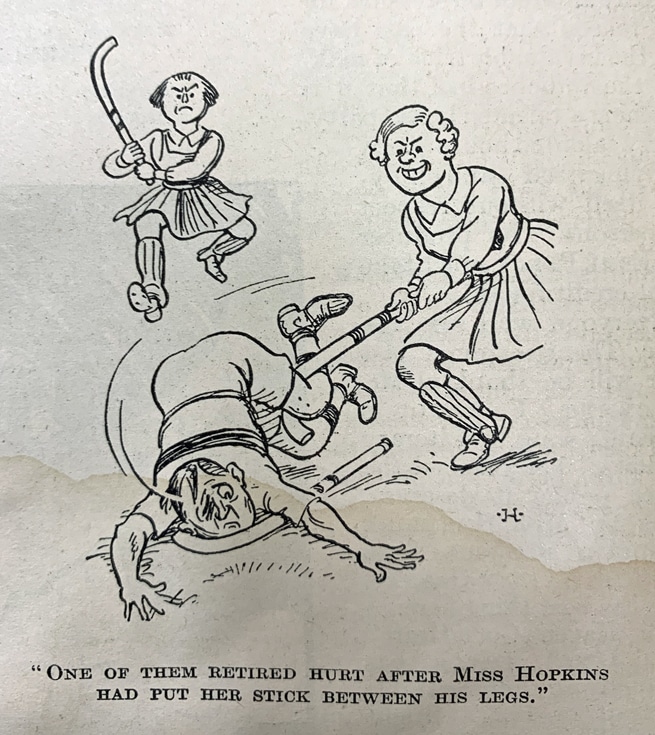 |
|
| Cartoons from Punch magazine, 1903. Cartoons from the British satirical magazine Punch or The London Charivari reflecting the impression of hockey as an unladylike game during the early part of the twentieth century. Punch magazine helped to coin the term “cartoon” in its modern sense as a humorous illustration. These cartoons explored societal perceptions amongst, for the most part, male high society groups, However, perceptions like the hockey-related ones of this article were not exclusively held by men – there were plenty of conservative women of the era happy to uphold such views, just as there were women who opposed to the campaign to give women the vote. |
||
By Dr Jo Halpin
Sources: Daily Mirror, The Tatler, Midland Counties Tribune, Dublin Daily Express.

